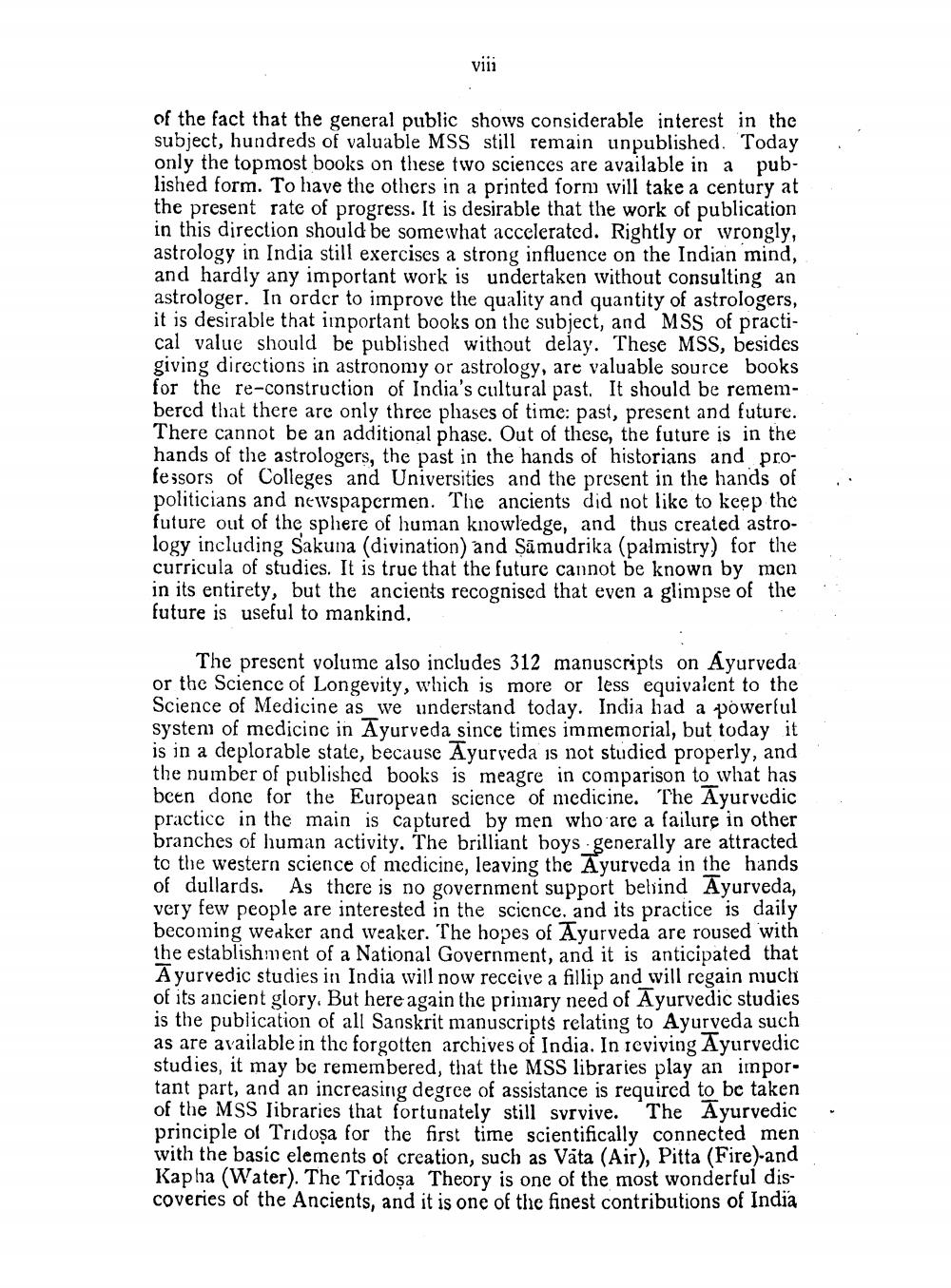Book Title: Alphabetical List of Manuscript in Oriental Institute Part 02 Author(s): Raghvan Nambiyar, Rajendra I Nanavati Publisher: Oriental Research Institute Vadodra View full book textPage 9
________________ viii resent rate hould be somewhat an influence on tnt consulting of the fact that the general public shows considerable interest in the subject, hundreds of valuable MSS still remain unpublished. Today only the topmost books on these two sciences are available in a published form. To have the others in a printed form will take a century at the present rate of progress. It is desirable that the work of publication in this direction should be somewhat accelerated. Rightly or wrongly, astrology in India still exercises a strong influence on the Indian mind, and hardly any important work is undertaken without consulting an astrologer. In order to improve the quality and quantity of astrologers, it is desirable that inportant books on the subject, and MSS of practical value should be published without delay. These MSS, besides giving directions in astronomy or astrology, are valuable source books for the re-construction of India's cultural past. It should be remembered that there are only three phases of time: past, present and future. There cannot be an additional phase. Out of these, the future is in the hands of the astrologers, the past in the hands of historians and professors of Colleges and Universities and the present in the hands of politicians and newspapermen. The ancients did not like to keep the future out of the sphere of human knowledge, and thus created astrology including Sakuna (divination) and Samudrika (palmistry) for the curricula of studies. It is true that the future cannot be known by men in its entirety, but the ancients recognised that even a glimpse of the future is useful to mankind. The present volume also includes 312 manuscripts on Ayurveda or the Science of Longevity, which is more or less equivalent to the Science of Medicine as we understand today. India had a powerful system of medicine in Ayurveda since times immemorial, but today it is in a deplorable state, because Ayurveda is not studied properly, and the number of published books is meagre in comparison to what has been done for the European science of medicine. The Ayurvedic practice in the main is captured by men who are a failure in other branches of human activity. The brilliant boys generally are attracted to the western science of medicine, leaving the Ayurveda in the hands of dullards. As there is no government support behind Ayurveda, very few people are interested in the science, and its practice is daily becoming weaker and weaker. The hopes of Ayurveda are roused with the establishment of a National Government, and it is anticipated that Ayurvedic studies in India will now receive a fillip and will regain niuchi of its ancient glory. But here again the primary need of Ayurvedic studies is the publication of all Sanskrit manuscripts relating to Ayurveda such as are available in thc forgotten archives of India. In reviving Ayurvedic studies, it may be remembered, that the MSS libraries play an impor. tant part, and an increasing degree of assistance is required to be taken of the MSS libraries that fortunately still survive. The Ayurvedic principle of Tridoşa for the first time scientifically connected men with the basic elements of creation, such as Vata (Air), Pitta (Fire) and Kapha (Water). The Tridosa Theory is one of the most wonderful discoveries of the Ancients, and it is one of the finest contributions of IndiaPage Navigation
1 ... 7 8 9 10 11 12 13 14 15 16 17 18 19 20 21 22 23 24 25 26 27 28 29 30 31 32 33 34 35 36 37 38 39 40 41 42 43 44 45 46 47 48 49 50 51 52 53 54 55 56 57 58 59 60 61 62 63 64 65 66 67 68 69 70 71 72 73 74 75 76 77 78 79 80 81 82 83 84 85 86 87 88 89 90 91 92 ... 930
